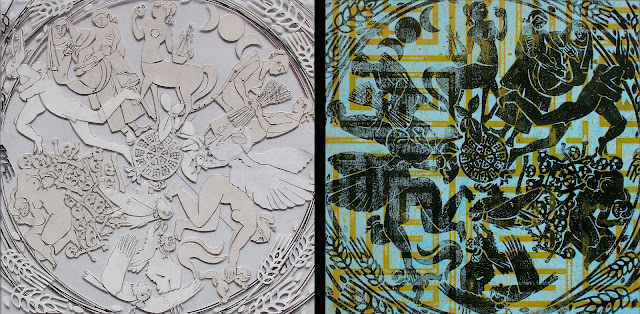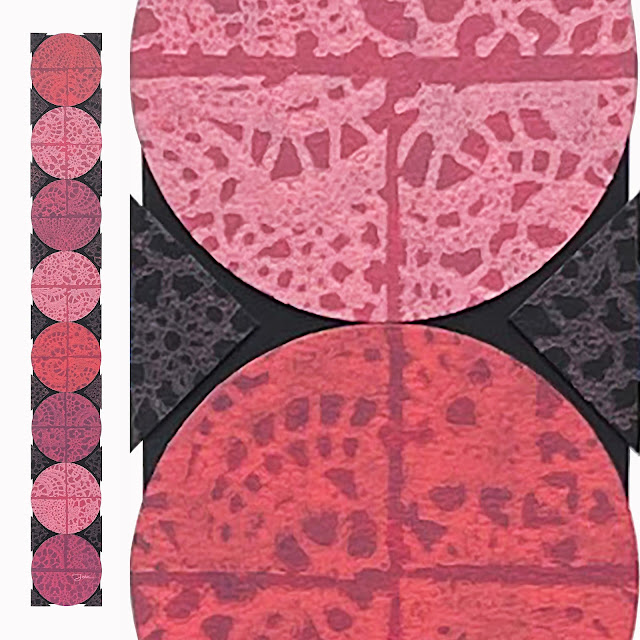The Persephone Cycle, Part 2
 |
| Left: Plate for Persephone cycle series of prints Right: "Persephone Cycle II" |
When Zeus could no longer ignore the suffering of mankind. He sent Hermes as emissary to negotiate Persephone’s return to her mother. Hades reluctantly agreed to her release and in parting gave Persephone, who had eaten nothing since her abduction, a pomegranate. This apparent act of kindness was instead a deception and curse. Anyone who eats the food of Hades must remain in his realm. Persephone ate only a few seeds but that was enough for Hades to make the legitimate claim that she must remain with him.
Finally, Rhea, the mother of Zeus, Demeter and Hades, proposed a compromise. Persephone would have to stay with Hades in the Underworld for six months each year. The rest of the year, she would be allowed to ascend to Earth and live with her mother. Hades would have Persephone as a consort and Demeter would restore Earth's fertility.
Persephone's cyclical descent to the dark Underworld and subsequent ascension to Earth, signify the progression of seasons, Fall and Winter succeeded by Spring and Summer. In the Fall, seeds are buried beneath the Earth and in the Spring, the seeds emerge to grow and flourish in sunlight.
This cyclical transformation of life after death was celebrated at Eleusis, the site of Demeter’s temple and became known as the Eleusian Mysteries. Demeter shared her knowledge of plant culture and harvest with Triptolemus who became her priest. He in turn shared that knowledge with the people of the world and began teaching her mysteries in two types of initiations. According to the “Homeric Hymn to Demeter” those initiations prepared the aspirant to receive the vision of light, to release subconscious fears and master them. One was concerned with the reunion of the goddesses; the other concerned the possibility of man's immortalization.
The mythic story of the abduction of Demeter's daughter, Persephone, and her subsequent resurrection and return is thought to have been celebrated at Eleusis for almost 2000 years and it has continued to engage the world for thousands of years since.



Comments
Post a Comment